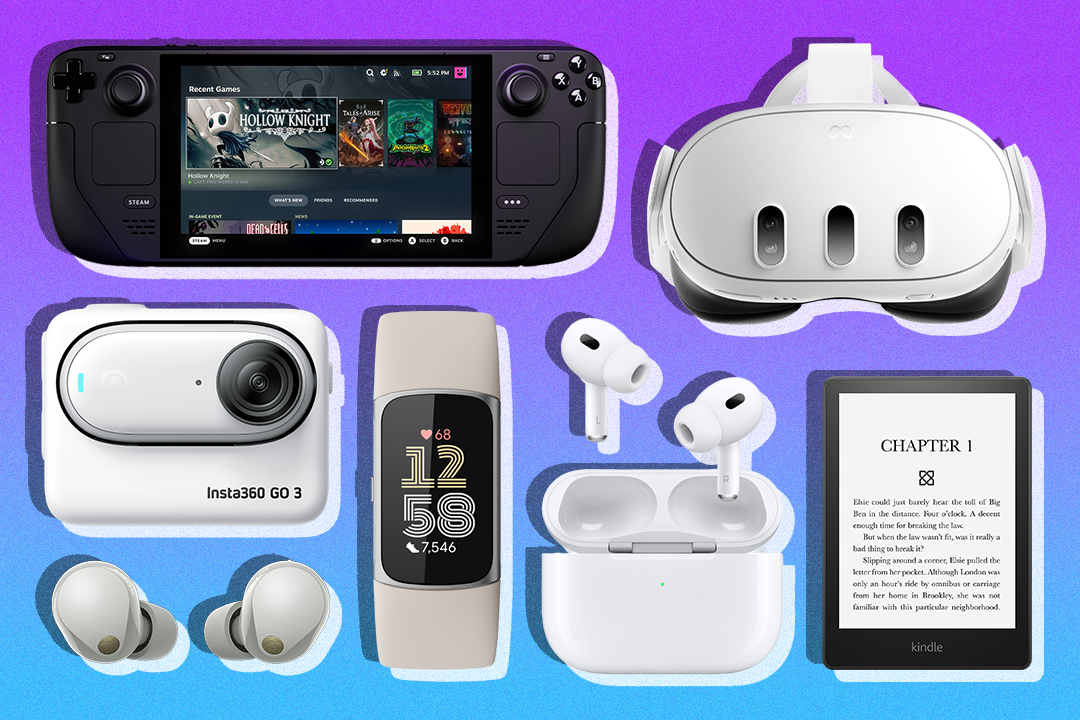Blitz News Digest
Stay updated with the latest trends and insights.
Gadgets That Make You Question Reality
Discover mind-bending gadgets that blur the lines between reality and fantasy—prepare to be amazed and rethink what's possible!
Top 5 Gadgets That Challenge Our Perception of Reality
In today's rapidly evolving technological landscape, gadgets are redefining our experience of the world around us. From augmented reality headsets to immersive virtual reality solutions, these tools challenge our perception of reality in profound ways. One of the most compelling examples is the Microsoft HoloLens, which overlays digital content onto the physical world, allowing users to interact with both simultaneously. This innovative device not only enhances productivity but also transforms how we engage with our environments, blurring the lines between the digital and the real.
Another game-changer in this realm is the rise of smart glasses, with options like Google Glass and the new Snap Spectacles. These devices integrate social media and smart notifications into our daily lives, offering real-time information right in our line of sight. More than just a fashionable accessory, they are paving the way for a future where our perception of reality is enhanced by seamless integration of technology into our visual field. As we explore the top 5 gadgets that challenge our traditional views, it's clear that the future promises to reshape our understanding of reality itself.

How Virtual Reality Devices are Reshaping Our Understanding of the World
Virtual Reality (VR) devices are revolutionizing the way we perceive and interact with our surroundings. By immersing users in a computer-generated environment, these devices allow individuals to experience scenarios that are otherwise inaccessible. From exploring ancient civilizations in reconstructed historical sites to simulating hazardous environments for training purposes, VR is reshaping our understanding of the world. Educational institutions are leveraging this technology to provide interactive learning experiences, making complex concepts more tangible and engaging for students.
Furthermore, the impact of Virtual Reality extends beyond education and training. In fields such as medicine, VR is being used for therapeutic purposes, helping patients confront phobias and manage pain through controlled exposure therapy. Additionally, architects and designers use VR to visualize their projects, allowing clients to traverse spaces before construction even begins. As a result, VR devices are not just tools for entertainment but are becoming essential instruments for enhancing our understanding and interaction with the world around us.
Are Augmented Reality Glasses the Future of Interaction?
The advent of augmented reality (AR) glasses has sparked a revolution in how we perceive and interact with the world around us. Unlike traditional display devices, AR glasses seamlessly overlay digital information onto the real world, creating immersive experiences that can enhance everyday tasks. From navigation assistance to interactive gaming, the potential applications are vast. As technology evolves, these glasses are becoming more compact and user-friendly, making it easier for people to adopt them as part of their daily routines.
However, the question remains: are augmented reality glasses truly the future of interaction? While they offer increased convenience and a more engaging way to process information, certain challenges must be addressed. Issues such as battery life, privacy concerns, and societal acceptance of wearing devices on one's face play significant roles in their widespread adoption. As developers work to resolve these hurdles, the future may see AR glasses becoming an integral component of our digital landscape, changing the way we interact not only with technology but with each other.